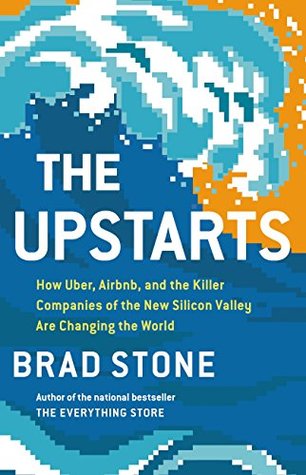More on this book
Community
Kindle Notes & Highlights
by
Brad Stone
Read between
October 10 - November 10, 2017
The letter threatened penalties of five thousand dollars per ride and ninety days in jail for each day the company remained in operation.
Hayashi got a close look at the city’s taxi system, which had a fifteen-year waiting list for medallions, caps on the number of cars allowed, and nonexistent service outside of downtown and the airport.
In the summer of 2010, Hayashi’s phone started ringing off the hook, and it wouldn’t stop for four years. Taxi drivers were incensed; a new app called UberCab allowed rival limo drivers to act like taxis.
Every time Hayashi picked up the phone, another driver or fleet owner was screaming, This is illegal! Why are you allowing it? What are you doing about this?
It was the first of countless times that executives at Uber would face government officials to discuss the legality of their company’s service.
Another company he was advising, Formspring, a question-and-answer site that had raised $14 million, seemed poised to become the next big social website and was negotiating with him to be its chief operating officer. Ade Olonoh, the co-founder of Formspring, says that discussions got so advanced that Kalanick was offered the role and there were board conversations about Kalanick’s compensation. Kalanick told me it was one of several jobs he considered at the time.
He fashioned himself a hands-on mentor to young CEOs, the Silicon Valley version of the Wolf from Pulp Fiction, who could drop into tricky situations and help raise money or negotiate deals.5
photo in his high-school yearbook shows him in midjump, his right leg outstretched, his face clenched with focus. “I would put it all in,” he said. “Leave it all on the field.”
Kalanick lived at home during college and pursued a computer science degree.
Droege recalls that a twenty-two-year-old Kalanick already had a penchant for constant pacing, his phone usually pressed to his ear, focused totally on finding anyone who could possibly help the young startup.
The founders moved into Ovitz’s swank offices in Beverly Hills, eventually hired seventy employees, and got an education in the L.A. business scene, reading books the Ovitz crew passed them, like The Art of War, by Sun Tzu, and The Forty-Eight Laws of Power, by Robert Greene.
But in July of 2000, thirty-three media companies, including the major music and movie trade groups, sued Scour in court for a whopping $250 billion.
It laid off most of its staff in the fall of 2000 and declared bankruptcy to escape the litigation.16 “That’s when we really learned how the world can work,” says Droege. “It’s not whether or not you are right or wrong.”
On September 11, he had a meeting scheduled in L.A. with Daniel Lewin, a co-founder of the Boston-based streaming-media company Akamai. Lewin was on American Airlines Flight 11 and died in the terrorist attacks.
Todd landed a job at Google and promptly hired away Kalanick’s last software engineer. Kalanick, twenty-seven, was now utterly alone. He had lived at his parents’ house for a year and had gone without regular paychecks while pursuing deals with companies like Microsoft and AOL, only to watch them invariably fall through.


